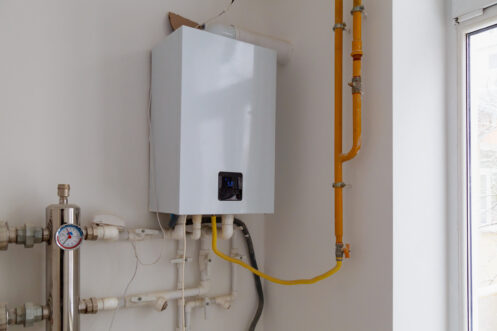Straightforward Methods to Maintain Your Home's Hot Water System ProperlyWays to Maintain Your Home's Hot Water System Functioning Well
Straightforward Methods to Maintain Your Home's Hot Water System ProperlyWays to Maintain Your Home's Hot Water System Functioning Well
Blog Article
This great article down the page in relation to How to Maintain a Hot Water Heater in a Few Simple Steps is pretty much informative. Don't overlook it.

Warm water is essential for daily comfort, whether it's for a refreshing shower or cleaning recipes. To ensure your hot water system runs effectively and lasts longer, regular maintenance is key. This article provides sensible pointers and understandings on exactly how to maintain your home's hot water system to avoid disturbances and pricey repair work.
Intro
Keeping your home's hot water system might seem challenging, yet with a couple of basic steps, you can guarantee it runs efficiently for years to find. This guide covers everything from understanding your hot water system to DIY maintenance suggestions and knowing when to call specialist assistance.
Importance of Preserving Your Hot Water System
Regular maintenance not just prolongs the life-span of your hot water system however also guarantees it runs effectively. Neglecting upkeep can result in reduced efficiency, greater energy expenses, and also premature failing of the system.
Signs Your Warm Water System Needs Maintenance
Recognizing when your hot water system requires attention can prevent major problems. Keep an eye out for indications such as irregular water temperature, odd sounds from the heater, or rustic water.
Recognizing Your Hot Water System
Prior to diving right into maintenance tasks, it's handy to understand the fundamental components of your warm water system. Commonly, this consists of the water heater itself, pipes, anode poles, and temperature level controls.
Monthly Upkeep Tasks
Normal monthly checks can assist capture small issues before they rise.
Purging the Water Heater
Flushing your hot water heater gets rid of sediment buildup, enhancing performance and prolonging its life.
Checking and Replacing Anode Rods
Anode poles protect against corrosion inside the tank. Checking and changing them when broken is crucial.
Examining and Adjusting Temperature Settings
Changing the temperature level setups makes certain optimal performance and security.
DIY Tips for Upkeep
You can do numerous upkeep jobs yourself to keep your hot water system in top condition.
Checking for Leaks
Regularly examine pipes and connections for leaks, as these can result in water damage and higher expenses.
Checking Stress Alleviation Valves
Checking the pressure relief valve ensures it works properly and avoids excessive stress accumulation.
Protecting Pipes
Insulating warm water pipelines decreases warmth loss and can conserve energy.
When to Call a Specialist
While DIY upkeep is useful, some issues call for specialist know-how.
Complicated Problems Requiring Specialist Assistance
Examples consist of major leaks, electric troubles, or if your water heater is regularly underperforming.
Routine Specialist Upkeep Perks
Expert maintenance can consist of detailed examinations, tune-ups, and guaranteeing compliance with safety requirements.
Conclusion
Regular upkeep of your home's warm water system is important for efficiency, long life, and expense financial savings. By adhering to these ideas and knowing when to seek specialist assistance, you can make sure a dependable supply of hot water without unanticipated interruptions.
How to Maintain an Instant Hot Water Heater
Before tinkering with your hot water heater, make sure that it’s not powered on. You also have to turn off the main circuit breaker and shut off the main gas line to prevent accidents. Also turn off the water valves connected to your unit to prevent water from flowing into and out of the appliance. 2. When you’re done, you have to detach the purge valves’ caps. These look like the letter “T” and are situated on either side of the water valves. Doing so will release any pressure that has accumulated inside the valves while at the same time avoid hot water from shooting out and burning your skin. 3. When the purge valves’ caps are removed, you have to connect your hosing lines to the valves. Your unit should have come with three hoses but if it didn’t, you can purchase these things from any hardware or home repair shops. You can also get them from retail stores that sell water heating systems. Read the user’s manual and follow it to complete this task properly. When the hosing lines are connected, open the purge port’s valves. 4. You should never use harsh chemical cleaners or solutions when cleaning your unit. Make use of white vinegar instead. It should be undiluted and you’ll probably use about 2 gallons. 5. Now flush your water heater. This task should probably take about 40 minutes. We can’t give you specific directions for this because the procedure is carried out depending on the type, model and brand of your heater. With that being said, refer to the user’s manual. 6. When you’re done draining the unit, you have to turn off the purge port valves again. Remove the hosing lines that you earlier installed on each of the water valves. Put the valve caps (purge port) back in their respective places and be very careful so as not to damage the rubber discs that are found inside these caps. 7. Now that everything’s back in place, check your user’s manual again to find out how to reactivate your water heating system. 8. Once it is working, turn one of your hot water faucets on just to let air pass through the heater’s water supply pipes. Leave the tap on until water flows smoothly out of it. https://www.orrplumbing.com/blog/2014/september/how-to-maintain-an-instant-hot-water-heater/

I'm very eager about What Kind of Maintenance Do Water Heaters Need? and I really hope you enjoyed reading my post. Do you know about somebody who is interested by the topic? Do not hesitate to promote it. We love reading our article about Water Heater Maintenance Tips You Can't Afford to Forget.
Go Deal Report this page